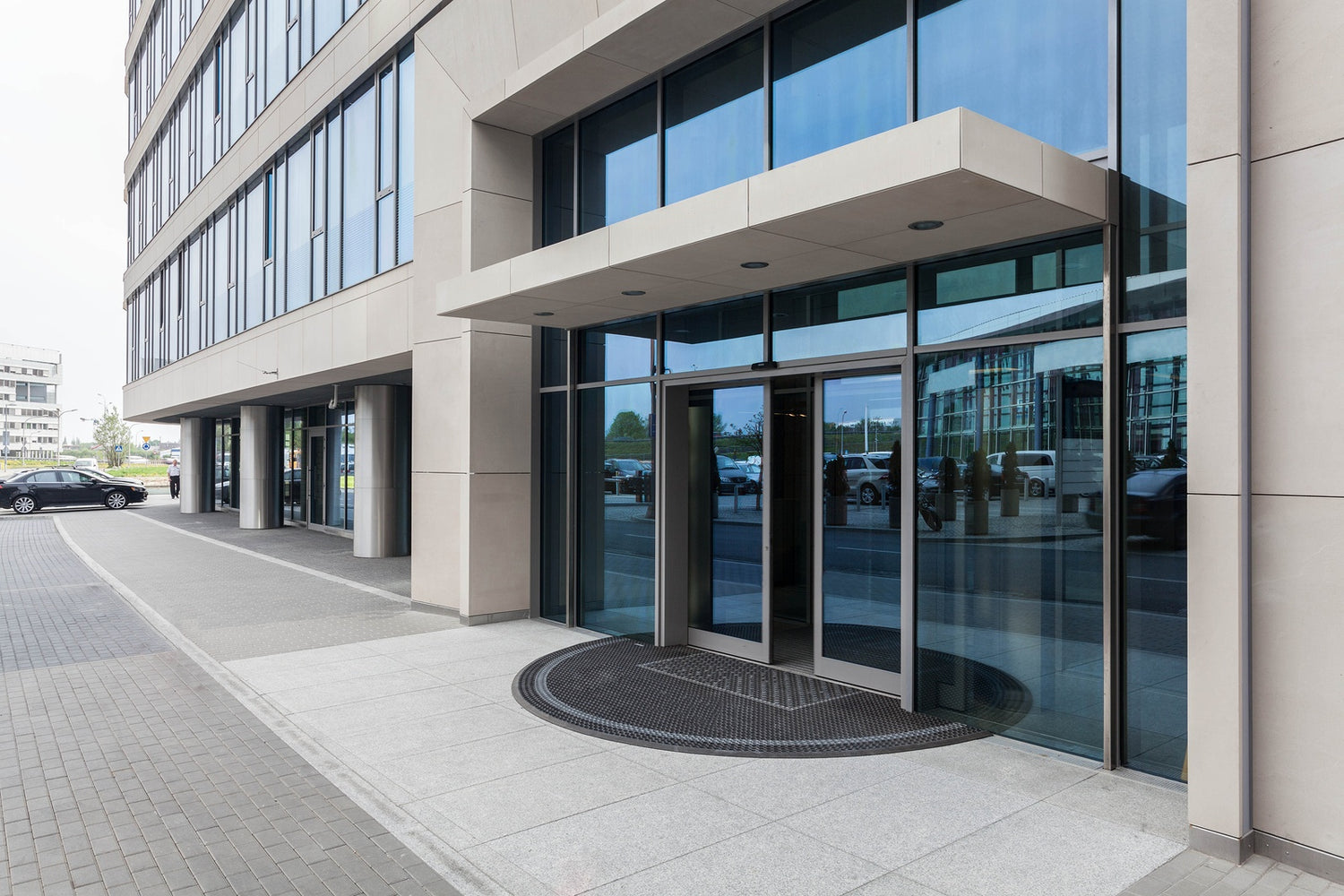 Especially during the winter season, but also throughout the year, facility managers must take care to properly maintain entrance mats and inspect and replace them as needed.
Especially during the winter season, but also throughout the year, facility managers must take care to properly maintain entrance mats and inspect and replace them as needed.
Below, we look briefly at how and when to clean both rubber and carpeted entrance mats, and give some advice on when to replace mats that may otherwise increase the risk of trip-and-fall accidents.
Cleaning rubber entrance mats
Year-round at large facilities with heavy foot traffic, or in smaller facilities during snowy, muddy or rainy weather, it’s advisable to clean entrance mats daily. In less demanding situations, cleaning them once or twice a week may be acceptable.
For rubber and scraper-type entrance mats, first brush away any dirt or debris with a broom or handheld brush. Next, rinse off the mat with hot water to loosen and dissolve any dirt adhering to it. Then, add a mild detergent or degreasing agent to hot water and thoroughly wash the mat. Finally, rinse it.
Be careful to avoid using bleach, butyl-degreasers, or other harsh chemicals that could damage or discolor your rubber mat. Check the warranty to ascertain which chemicals are safe to use, and never clean rubber mats in a commercial dishwasher, as this can shorten their lifespan.
Cleaning carpeted entrance mats
Carpeted, highly absorbent entrance mats should be cleaned whenever they are noticeably dirty or when holding a large amount of water. In some cases, you can simply spot-clean, but in high-traffic situations full daily cleaning is recommended.
Carpeted mats should be vacuumed daily and/or brushed with a broom or carpet sweeper. When they are sufficiently dirty, clean them with a solution of water and a neutral, non-solvent cleaning agent, then allow them to drip-dry. If mats become saturated, they need to be cleaned and left to dry. Note that nylon mats take longer to dry than olefin mats and should be hung in an area where they can drip out.
When carpeted entrance mats become stained and greasy, or gum gets stuck on them, use a solvent-based cleanser on the affected area (not on the whole mat). The mat must be carefully rinsed to remove all solvent following cleaning and left to dry.
Before putting your entrance mats back into position, be sure to sweep and clean the floor space on which they will lie so as to maximize grip and minimize risk of mat movement during usage.
When to invest in new entrance mats
Entrance mats that are beginning to fray at the edges present a tripping hazard that can only be solved by replacing them with new mats. Mats that curl up at the edges can be taped down with heavy-duty carpet tape, although this is an unsightly remedy. Remember: If the subsurface of your entrance mats is no longer effectively gripping the floor, it is critical that the mats be replaced as soon as possible.
You might want to consider investing in heavier-duty mats. The human and financial costs of tripping over one that is of inferior quality, damaged or warn-out are far too high to run the risk. And better entrance mats will save you money on facility floor maintenance.
Properly maintaining your facility's entrance mats and replacing them when damaged will eliminate safety hazards and lower the costs of cleaning your facility's flooring. Both rubber and carpeted mats need regular maintenance, and during the winter season, daily cleaning is the best general policy.

